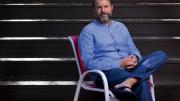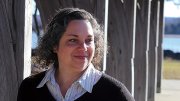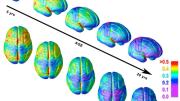In the history of stock market rallies and economic recessions, much defies quantitative explanation. Whether looking back on the tulip mania that gripped the Netherlands in the 1630s, or to the present obsession with bitcoin, the decisive role of human behavior fascinates journalist and author Charles Duhigg. “Researchers have pinpointed moments when investors’ imaginations become especially labile: during periods of social uncertainty, or when new technologies emerge, or when it seems that some improbable group has become fantastically rich overnight,” he says. “At such times, a few financial storytellers often rise to prominence: people you’ve never heard of who fill the media with sensational tales of wealth earned in bold, exciting ways.” Duhigg extracts crisp observations like these, made in a recent New Yorker profile of contemporary financial storyteller, Chamath Palihapitiya, from messy, complicated particulars. And in the course of drawing a telling portrait of the man, he explains the intricacies of a newish financial instrument—and its ability to swiftly make some people rich, and others poor.
Duhigg, M.B.A. 2003, is the author of two books, The Power of Habit, and Smarter, Faster, Better, that use such stories to elucidate scientific research into human and organizational behavior. While the narrative structure of his work is similar to that employed by his New Yorker colleague Malcolm Gladwell—memorable essays linked to scientific studies in surprising ways—Duhigg’s interests and approaches are distinct. He is both a student of intellectual history, and at bedrock, a tenacious investigative journalist, delving into what makes organizations, and the people within them, tick. In 2013, as part of a New York Times team that produced a series of stories about Apple, he won the Pulitzer Prize for explanatory reporting. To find the 20 or 30 former Apple employees willing to speak with him about the company’s business practices—including its role in the difficult, underpaid, and sometimes deadly work at Foxconn, its manufacturing partner in China—he contacted some 900 people. Shortly after the series appeared in 2012, Duhigg recalls, “Foxconn gave a raise to every single employee. Because Foxconn was such a dominant player,” other manufacturers had to follow to remain competitive. “Someone figured out that about three million people got raises equivalent to hundreds of millions of dollars—all because there were employees courageous enough to say, ‘Let me paint a picture for you of what it was like to work at this place.’”
Storytelling can change the world, Duhigg knows. And he is an exceptionally gifted raconteur, who frequently uses his talent to pull back the veil on systems and practices that operate, often opaquely, in the worlds of business and finance. From Wall Street to Silicon Valley, he has unpacked complexities that most readers, and other reporters, might reflexively shun. He’s written engagingly about the perils of reverse mortgages, insurance scams, the widespread and growing problem of water pollution, the story behind Google’s hegemony in online search, the economics of fads, and the rise of risk at Fannie Mae (the government’s mortgage-loan guarantor) during the Great Recession. Common to these stories are clear explanations set within a compelling narrative. “My number one goal, in anything that I’m writing,” he says, “is to entertain the reader. Because if I’m not drawing you in, then you’re not going to read it. And it doesn’t matter how good the ideas are…. I’m always thinking about how to communicate some idea that I think is important and interesting—and complex. But the way I want to do that is through a story. Because the story is the key that is going to draw you in. And most importantly, it’s going to be a lot easier to remember that idea. Because you’re going remember the story.”
An Education in Journalism and War
Duhigg grew up in Albuquerque, New Mexico, the seventh of 10 children. At the local public school, Valley High, he was student body president and a national debate champion. Although both his father and mother were attorneys, “We were a middle-class family.” He applied to Yale and other top colleges with no sense that he was about to be thrown into “a very big pond.” (He didn’t apply to Harvard then: “I knew, in my infinite wisdom,” he says self-deprecatingly, “that Harvard was snooty.”)
Yale introduced Duhigg to a level of competition he had never imagined. He discovered that he loved intellectual history, his eventual major. And he met his future wife, classmate Elizabeth Alter, a marine biologist.
After college, the two of them lived abroad for a year, returning to the United States so that Duhigg could launch, with his father, a medical-education startup to help underserved communities. “But I had no idea what I was doing.” He decided he needed a business education.
Duhigg arrived at Harvard Business School (HBS) in the fall of 2001, at a time of national ferment. Two weeks after classes began came 9/11. Then, in October, news broke of the Enron accounting scandal. The following year, it was WorldCom’s turn. Ethics education had not been part of the formal business curriculum, but soon would be—graduates of the school had figured prominently in the misconduct at both companies (see “An Education in Ethics,” September-October 2006, page 42). And there was talk of impending war in Iraq—as well as classroom discussions of the military as an organization, with lessons for business. Several of Duhigg’s classmates, he remembers, had military backgrounds.
But his decision to become a journalist was driven less by these events than by a work experience that occurred between his first and second years back in New Mexico, where he’d been contemplating becoming a businessman, and then running for political office (his sister, Katy Duhigg, is now a state senator there). In the summer of 2002, building spreadsheets for a private-equity firm, he would pause at 11 A.M.: to balance the tedium of the work, he’d listen to episodes of the public-radio show, “This American Life,” which are built around a series of stories. Sometimes, Duhigg would allow himself two episodes—but not more: “I didn’t want to use them all at once. I wanted to stretch them out. They were the highlight of my day.”
Realizing that private equity was not his calling, upon graduation from HBS he secured an internship at the Washington Post with a group of about 30 other aspiring reporters, most of them recent college graduates. “It was basically a tryout for getting a job,” he says. His pay, equivalent to about $30,000 a year, made him easily the lowest earning member of his business school class. Even worse, “At the end of the summer, something like 23 of the 30 interns got jobs.” Duhigg did not.
“In my soul, I was a journalist,” says Duhigg. “I did good work, I wrote good stories.” But after two years steeped in HBS’s insider culture, the feedback he got at the Post was “You’re not like one of us. You need to go to another newspaper to learn to signal to the world that you’re a journalist, because you sound too much like the people that we cover.”
Although Duhigg initially suffered because of his HBS background, that business knowledge would later prove valuable to his investigative reporting. “I think what HBS actually teaches people are two things that they don’t advertise, and maybe don’t even intend to teach,” he says. “The first is a basic comfort around a vocabulary and a set of ideas.” Just as medical students learn to call things by their Latin names, for example, he says, business students learn how to talk about private equity, internal rates of return, and portfolio theory: “These concepts are really important. They’re at the core of how business gets done.”
“The second thing that HBS teaches is a culture, and a way of signaling that culture to other people in a room—that you’re part of the same club,” he observes. “Business works because people trust each other; you’re signing contracts, but the contract can’t possibly anticipate every single potential problem; and you’re making credit transfers, which are basically numbers in a computer. You trust that people are going to follow through.” It’s a kind of insider’s optimism, a point of view that is fundamental to transacting business—but was antithetical to the values of his journalist colleagues, who expected him to bring a skeptical attitude to his work. “I don’t think the judgement that the Washington Post made [not to hire me] was exactly the right judgement,” he says now. “But I understand why they made it.”
Duhigg took a job at the Los Angeles Times, and “muscled his way into a position” where the paper would send him to Iraq, to cover the war there. Less than a year out of HBS, he was in the middle of firefights, far from most of his classmates, listening to the “zips of bullets flying past,” and observing the operations of a war machine firsthand. The military is an organization both like and unlike the companies Duhigg studied in business school. But it yields to the same kind of analysis. As he later described in The Power of Habit, “The U.S. military is one of the biggest habit-formation experiments in history.” From teaching soldiers “how to shoot, think and communicate,” to how to respond automatically amidst the chaos of a battlefield, “the entire organization relies on endlessly rehearsed routines for building bases, setting strategic priorities, and deciding how to respond to attacks.”
Duhigg was fascinated by what he saw and experienced, both intellectually and viscerally. “When you’re in a war zone,” he says, “you feel awake. Completely, effortlessly awake, like after your children are born.” Living with three other reporters in a house in the middle of Baghdad, there was something to write about every day—a bombing that had him rushing to the scene, or the daily press conferences chronicling the vicissitudes of the conflict. And there were “embeds,” applications to be transported by Blackhawk helicopter to a forward operating base where “They give you a trailer, where you and your photographer can live with another journalist. And then you can do whatever you want. If there’s a patrol going out, you can say you’d like to join, and then jump in the Humvee.”
“The way the war machine worked,” he observes, “is they’d take 15 Humvees, drive out together on patrol, and wait for someone to shoot.” Or they’d head to a location from which mortars had been launched into the base, aiming to root out the attackers. Amidst the chaos, there were many surprises. For example, “When a firefight breaks out, you do not see the people who are shooting at you, you don’t even know what direction they’re shooting from. If you do see them, it’s because they are already dead.” “The odds of an incoming bullet hitting someone are relatively small,” he learned. Most of the enemy were simply spraying bullets, hoping to hit something, rather than doing the dangerous job of taking aim at a particular target.
Though at pains not to glorify the experience, it made an indelible impression on him: from watching the vast military organization as it lumbered into the field, to registering his own sensations, including the intoxicating sense of energy that comes with being in a war zone. “At the end of every day,” he recalls, “you feel genuinely good about yourself.” It’s a paradoxical satisfaction that comes “Because you weren’t killed. Because you made it.” These sensations, which exert a kind of gravitational pull to return to battle, were more culturally acceptable to talk about 15 years ago, he acknowledges. “Now the people who were fighting then have been completely forgotten; nobody talks about Veteran’s Affairs, all these veterans who are suffering so much.”
His own motives for covering the war were mixed, he says, and hard to untangle. On one hand, “The role of the press during a war is essential. Journalists make war real for the people who would otherwise forget about it, or just say, ‘It’s fine, it’s someone else’s kid whose life is at risk.’” But looking back, he brings a conflicting perspective to his decision to go to Iraq, and his lack of concern for the danger and the impact his death could have on others—the unthinking luxury, perhaps, of a young man. He’d left behind his fiancé (now married, she is a marine biologist and an assistant professor at California State University Monterey Bay). From the vantage point of the present, he calls that decision “unconscionable. It’s essential that journalists are there, but to volunteer to go into a war zone, even if it’s virtuous, is an act of extreme selfishness.”
Such is hindsight. More than a decade and half later, now raising two boys together in Santa Cruz—near her work and close to the disruptive innovation of Silicon Valley that is often the subject of his journalism—he and Elizabeth Alter poke fun at his penchant for danger. She posted one of their exchanges a couple of years ago on social media, a text he sent her. “They had a ‘buy one, get two free’ deal at the fireworks store,” he wrote. A minute later: “So that seemed too good to pass up.” Then: “I’m sure it will be totally safe.”
“I have been gone like 20 minutes,” she replied.
A Fitness of Mind
Despite his later misgivings about covering the war, it was there that Duhigg met the U.S. military officer who gave him the seed of the idea for The Power of Habit, his first book. Stationed in the city of Kufa, 90 miles south of Baghdad, this army major had observed that rioting in public places followed a pattern: crowds of Iraqis would arrive and swell over several hours, then food vendors would appear, together with spectators. Eventually, someone would throw a rock or a bottle, and then “all hell would break loose.” The major asked the city’s mayor if he could keep the food vendors out of the plazas. Yes, he replied. The next time a riot seemed imminent, and Iraqi police alerted U.S. forces to stand by, all the familiar ingredients were there—except the kebab sellers. By 8 P.M. the crowd had dispersed.
Back in the United States, Duhigg began gathering stories like this one, and speaking to scientists who study habits. The resulting book, published in 2012, spent three years on the New York Times best sellers list; by 2017, when the title became the answer to a Jeopardy question: “CHARLES DUHIGG EXPLORED ‘WHY WE DO WHAT WE DO IN LIFE AND BUSINESS’ IN ‘THE POWER OF’ THIS,” the book had clearly become part of the cultural conversation.
Even people who have never heard his name are likely to be familiar with one of the stories Duhigg wrote about because it is famous—or infamous—in the field of data science. He was one of the first journalists to describe the use of data aggregation and analysis by a corporation to predict behavior—in this case, the retailer Target’s effort to determine whether a shopper is pregnant. During pregnancy, and in the months immediately after a child is born, new purchasing habits become established, so being the first retailer to lure such a customer with special discounts and ads confers an important competitive advantage. Target learned from the purchasing patterns of customers in its baby shower registry—who shared their due dates and were given valuable coupons and offers in exchange—what items pregnant shoppers buy at each stage of pregnancy. With this “profile” in hand, the company was able to mine its database of all customers (aggregating credit-card and biographical data, in-store and online sales, and online browsing history) to predict who among them is pregnant. The patterns allow the retailer to easily distinguish among people who are buying diapers for a relative or friend and those who are actually expecting. This story is by now so well known that many people have heard it without knowing its origin.
In a recent conversation, Duhigg noted that it took him weeks to realize the incendiary implications of what he had heard, initially as one of many presentations at a data conference. He tried to research two or three other promising leads first. “For whatever reason, I did not recognize how incredible this story was: that someone could peer inside a woman’s uterus through data.” That kind of oversight happens frequently, he believes. People don’t recognize important and consequential stories, events, facts, and practices when they are shrouded in routine.
Duhigg thus pays very close attention to his own habits of mind—and especially how they affect productivity, the subject of his second book, Smarter, Faster, Better (2016). The title is like an Olympic motto for the information age—Citius, Altius, Fortius (Latin for faster, higher, stronger) reimagined as goals for developing a fitness of mind rather than body. “The key to real productivity is thinking more deeply,” he says. “There’s this Peter Drucker quote: ‘There is nothing quite so useless, as doing with great efficiency, something that should not be done at all.’ Smarter, Faster, Better is about building cognitive routines in order to think more deeply.”
To-do lists, says Duhigg, are “dangerous because humans have a need for cognitive closure. To feel productive, they’ll look for the thing that is easiest to cross off.” In fact, when they write up a new list, he explains, 20 percent of all people “will put something on it that they have already finished, because it feels so good to cross it off.” The correct use of a list is to externalize tasks that need to be done—“so you don’t have to hold that stuff in your memory.” But that is distinct from a to-do list, which for Duhigg begins with a blank piece of paper the night before. “On it, you write down the one most important thing to get done, the thing that will matter the most, if you can get it done. And then, if you want to, you can also write down what you will do if you finish that first thing. And that’s it.”
A second application of lessons from the book is his routine for handling emails, based on the science of motivation, which shows that people’s will to accomplish a task is stronger when they have choices. So he turns a chore into a choice by selecting which emails to answer first, because that makes it easier to start, and then to keep going. “It’s true,” he says, “it works.”
The “Moral Authority” to Report in Depth
As Duhigg’s career has progressed, it has begun to reflect, more and more, the deep thinking that is central to his work. From his stint as a reporter for the L.A. Times from 2003 to 2006, where he covered the music business, he jumped to the East coast, landing a job at the New York Times by telling the editor interviewing him for a job that if he could write about anything it would be insurance—and explaining why in a memo he worked on for two weeks.
Hired at the Times, he had ample opportunity to exercise his investigative instincts, first as a staff writer, then as an editor, and finally as a columnist. Working on a story about long-term care insurance fraud, for example, he’d ask himself, “If I were going to run a scam, how would I do it?” HBS had taught him how business models worked, and all he had to do was figure out how to exploit those models. This made locating the bad actors easier, he says. “You’d find the companies selling bad policies, or selling policies to seniors, and then confusing the paperwork in the hopes that they would die or develop Alzheimer’s before they filed a claim.” Attorneys who’d sued such companies would point him to depositions. “It’s not hard work, he says, “it’s just time consuming.”
But increasingly, he began to gravitate toward stories like one he wrote in 2016 for the New York Times Magazine, about Google’s efforts to build the perfect team. The story was about organizational behavior, and the surprising finding that psychological safety—a shared trust, respect, and openness—was the one element common to the most successful teams everywhere, not just at Google. In 2017, when Duhigg gave up his job at the Times after 11 years, it was because “I realized that I really did not like writing things that I didn’t think people would want to read weeks later.” At daily newspapers, he says, there is always breaking news to cover and stories must be turned around in short order. “And a week later, they’re stale. You can’t do things with narrative structure, so that your work will be read just for the sake of reading.”
In 2018, as an experiment, Duhigg wrote cover stories for three magazines: The Atlantic, The New Yorker, and Wired. Applying what he had learned throughout his career, he used the experience to try to figure out how the magazines differed. At The Atlantic, his editor kept saying, “quite rightly and very smartly,” he says, that his piece needed to be more about the idea (anger in America) and less about the narrative. By the end of the process, Duhigg was saying the same thing as his editor: “You become what the magazine is. And they are each quite different.” If The Atlantic is a magazine of ideas, beautifully narrated, The New Yorker is the place where the narrative itself can be at least as important: “They write pieces that people will want to read five years from now because they’re so well written, and they’re so interesting, that even if the event, or the moment that motivated that piece has disappeared, you just love reading it anyway. It corresponded so well with what I wanted in my soul.”
When the news value of a story he’d been working on several years ago evaporated, for example, Duhigg sold the piece to The New Yorker instead. The story was about Anthony Levandowski, the Google engineer who led the company’s efforts to develop a self-driving car. When Levandowski offered his services to a rival, Uber, which was developing its own autonomous vehicles, he was fired, and then sued by Google for stealing trade secrets. This iconic tale of Silicon Valley innovation and betrayal was supposed to become Duhigg’s next book, until a settlement derailed those plans. The silver lining, he says, is that “I spent a year and a half writing that piece, and I’ve never had an experience where I knew so much more about every sentence than is in the story.” For him, that article has become the apotheosis of completely understanding a subject, in a way daily newspaper deadlines cannot accommodate. He says, “It just felt so magical.”
Duhigg’s enthusiasm for explaining complex situations and human behaviors carries into work on his next book, about the science of conversation. On his way to meet a neurologist he’s already spoken with two or three times while researching the book, he reflects that there is really no reason that he has to drive two hours just to meet the man in person. But he recalls something his first editor at the L.A. Times taught him: that at some point in the course of reporting, “you’ll feel that you have the moral authority” to write about a subject. Duhigg probes beyond the “what” to the “why,” beyond the facts to the point, he says, “where you can analyze them.” That’s his special gift to readers, a tapestry woven from threads of intellectual history, beat reporting, and financial acumen—spun into durable tales of human behavior that anyone can learn from.









